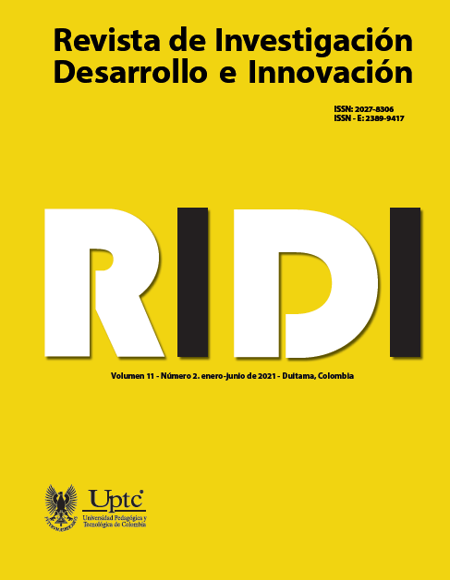Biodegradation of polyvinyl chloride by Mucor s.p. and Penicillium s.p. isolated from soil

Abstract
PVC is one of the most widely used plastics today and the one that produces the most waste. In recent years, microorganisms capable of degrading it have been reported, most of which come from environments in which PVC is accumulated. The aim of this work was to study the degradation of PVC without plasticizer, from fungi isolated from a soil sample contaminated with PVC resin. The fungi were isolated and morphologically characterized, 30 morphospecies were obtained, 8 were chosen to undergo preliminary tests in a medium whose only carbon source was a PVC film. Growth curves of the two isolates with better results were made and their molecular identification showed that they corresponded to Penicillium sp. and Mucor sp., the latter gained biomass from PVC and in both cases, the films showed visible changes, which were supported by infrared spectra. Although the results shown in this article are preliminary, they open the door to new forms of PVC waste degradation that are very persistent.
Keywords
Penicillium expansum;, Mucor sp;, PVC resin;, fungal isolations;, growth curves
Author Biography
María Luisa Pardo-Rodríguez
Environmental Engineering Student
Patricia Joyce Pamela Zorro-Mateus
Chemist, Msc. In Biochemistry
References
Acoplásticos. (2019). Plásticos en Colombia 2019-2020. In Plásticos en Colombia 2019-2020 (49th ed.,126).
Ali, M. I., Ahmed, S., Robson, G., Javed, I., Ali, N., Atiq, N., & Hameed, A. (2014). Isolation and molecular characterization of polyvinyl chloride (PVC) plastic degrading fungal isolates. Journal of Basic Microbiology, 54(1), 18–27. https://doi.org/10.1002/jobm.201200496
Barnett, H., & Hunter, B. (1972). Illustrated genera of imperfect fungi (Third). Minneapolis: Burgess Publishing Company.
Bergmann, M., Mützel, S., Primpke, S., Tekman, M. B., Trachsel, J., & Gerdts, G. (2019). White and wonderful? Microplastics prevail in snow from the Alps to the Arctic. Science Advances, 5(8), 1–10. https://doi.org/10.1126/sciadv.aax1157
De Campos, A., & Martins Franchetti, S. M. (2005). Biotreatment effects in films and blends of PVC/PCL previously treated with heat. Brazilian Archives of Biology and Technology, 48(2), 235–243. https://doi.org/10.1590/s1516-89132005000200010
Domsch, K. Gams, W. & Anderson, T. (1980) Compendium of soil fungi, 1, Academic Press London Ltd. London, United Kingdom.
Felsentein, J. (1985). Confidence limits on phylogenies: An approach using the bootstrap. Evolution, 39 (4), 783–791. https://doi.org/10.2307/2408678
Giacomucci, L., Raddadi, N., Soccio, M., Lotti, N., & Fava, F. (2020). Biodegradation of polyvinyl chloride plastic films by enriched anaerobic marine consortia. Marine Environmental Research, 158. https://doi.org/10.1016/j.marenvres.2020.104949
Grisa, A. M. C., Simioni, T., Cardoso, V., Zeni, M., Brandalise, R. N., & Zoppas, B. C. D. A. (2011). Degradação biológica do PVC em aterro sanitário e avaliação microbiológica. Polimeros, 21(3), 210–216. https://doi.org/10.1590/S0104-14282011005000046
Gu, J.-D. (2003). Microbiological deterioration and degradation of synthetic polymeric materials: Recent research advances. International Biodeterioration and Biodegradation, 52, 69–91. https://doi.org/10.1016/S0964-8305(02)00177-4
Hamzah, A., Manikan, V., & Abd Aziz, N. A. F. (2017). Biodegradation of tapis crude oil using consortium of bacteria and fungi: Optimization of crude oil concentration and duration of incubation by response surface methodology. Sains Malaysiana, 46(1), 43–50. https://doi.org/10.17576/jsm-2017-4601-06
Harms, H., Schlosser, D., & Wick, L. Y. (2011). Untapped potential: exploiting fungi in bioremediation of hazardous chemicals. Nature Reviews Microbiology, 9, 177. http://dx.doi.org/10.1038/nrmicro2519
Kaczmarek, H., & Bajer, K. (2007). Biodegradation of Plasticized Poly (Vinyl Chloride) Containing Cellulose. Journal of Polymer Science, 45, 903–919. https://doi.org/10.1002/polb
Klrbas, Z., Keskin, N., & Güner, A. (1999). Biodegradation of Polyvinylchloride (PVC) by White Rot Fungi. Bull. Environ. Contam. Toxicol, 63, 335–342. https://doi.org/10.1007/s001289900985
Kimura, M. (1980). A simple method for estimating evolutionary rates of base substitutions through comparative studies of nucleotide sequences. Journal of Molecular Evolution, 16(2), 111–120. https://doi.org/10.1007/BF01731581
Kumar, S., Stecher, G., Li, M., Knyaz, C., & Tamura, K. (2018). MEGA X: Molecular evolutionary genetics analysis across computing platforms. Molecular Biology and Evolution, 35 (6), 1547–1549. https://doi.org/10.1093/molbev/msy096
Lucas, N., Bienaime, C., Belloy, C., Queneudec, M., Silvestre, F., & Nava-Saucedo, J. E. (2008). Polymer biodegradation: Mechanisms and estimation techniques - A review. Chemosphere, 73(4), 429–442. https://doi.org/10.1016/j.chemosphere.2008.06.064
Pacasa-quisbert, F., Loza-murguia, M., Bonifacio-flores, A., Vino-nina, L., & Serrano-canaviri, T. (2017). Comunidad de hongos filamentosos en suelos del Agroecosistema de K’iphak’iphani, Comunidad Choquenaira-Viacha. Selva Andina Research Society, 8 (1), 2–25. http://www.scielo.org.bo/scielo.php?script=sci_arttext&pid=S2072-92942017000100002
Park, E. J., Park, B. C., Kim, Y. J., Canlier, A., & Hwang, T. S. (2018). Elimination and substitution compete during amination of poly(vinyl chloride) with ehtylenediamine: XPS analysis and approach of active site index. Macromolecular Research, 26 (10), 913–923. https://doi.org/10.1007/s13233-018-6123-z
Raddadi, N., & Fava, F. (2019). Biodegradation of oil-based plastics in the environment: Existing knowledge and needs of research and innovation. Science of the Total Environment, 679, 148–158. https://doi.org/10.1016/j.scitotenv.2019.04.419
Sánchez, C. (2020). Fungal potential for the degradation of petroleum-based polymers: An overview of macro- and microplastics biodegradation. Biotechnology Advances, 40. https://doi.org/10.1016/j.biotechadv.2019.107501
Sumathi, T., Viswanath, B., Lakshmi, A. S., & Saigopal, D. V. R. (2016). Production of laccase by Cochliobolus sp. Isolated low molecular weight PVC. Biochemistry Research International, 2016, 1–10. https://doi.org/http://dx.doi.org/10.1155/2016/9519527
Vivi, V. K., Martins-Franchetti, S. M., & Attili-Angelis, D. (2019). Biodegradation of PCL and PVC: Chaetomium globosum (ATCC 16021) activity. Folia Microbiologica, 64, 1-7. https://doi.org/10.1007/s12223-018-0621-4
Vrabl, P., Schinagl, C. W., Artmann, D. J., Heiss, B., & Burgstaller, W. (2019). Fungal Growth in Batch Culture – What We Could Benefit If We Start Looking Closer. Frontiers in Microbiology, 10(October), 1–11. https://doi.org/10.3389/fmicb.2019.02391
Webb, J. S., Nixon, M., Eastwood, I. M., Greenhalgh, M., Robson, G. D., & Handley, P. S. (2000). Fungal colonization and biodeterioration of plasticized polyvinyl chloride. Applied and Environmental Microbiology, 66(8), 3194–3200. https://doi.org/10.1128/AEM.66.8.3194-3200.2000
White, T., Burns, T., Lee, S., & Taylor, J. (1990). Amplification and direct sequencing of fungal ribosomal RNA genes for phylogenetics. In D. H. Gelfand, J. J. Sninsky, & T. J. White (Eds.), PCR protocols. A guide to methods and applications 18, 315–322). San Diego, Calif.: Academic Press Inc.
